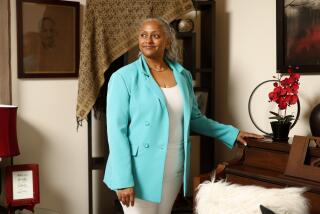Changing Creative Directors Helps Ailing Agencies Stem Client Flow
When an advertiser starts losing business, it often hires a new agency. But when an agency starts losing business, what does it do?
It hires a new creative top gun.
The actual title may be chief creative officer. Or executive creative director. Whatever you call them, they are ultimately responsible for the look of each ad that leaves the agency.
Hoping to stop an embarrassing client slide, the troubled New York agency Backer Spielvogel Bates last week named a new creative director. In one year, the agency has lost such big-name clients as Miller Lite and Dole. It is also on the brink of losing Avis.
The move mirrors similar actions taken by other agencies recently. When Chiat/Day/Mojo’s New York office began losing big clients, such as Reebok and Royal Caribbean Cruise Lines, it hired one of the top creative directors in the business. And when Ogilvy & Mather saw business drift away from its New York office two years ago, it also hired a top new creative director.
“It’s the most tangible way an agency can say, ‘Don’t fire us yet,’ ” said Jerry Della Femina, chairman of the New York ad firm Della Femina McNamee. “It usually gives an agency another six months to straighten up.”
Last week, Backer Spielvogel hired 43-year-old Donald Easdon, who is best-known for ads he helped create for Infiniti that didn’t show the cars but lots of rocks, trees and pussy willows. John Hancock ads that he helped create featured a father cradling his baby girl while talking about insurance. “Our No. 1 priority is to make sure our clients are happy with our work,” said Carl Spielvogel, chairman.
“The name of the game is credibility,” said Easdon, who was previously at the Los Angeles office of Hill, Holliday, Connors, Cosmopulos. “When an agency hires someone like me, they’re hiring my credibility.”
But such moves don’t always work.
Last year, when Chiat/Day/Mojo’s New York office saw an unusual loss of clients, it hired Tom McElligott, one of the best-known creative directors in the business. The Minneapolis agency he formerly co-owned created award-winning print campaigns for Porsche.
Chiat/Day immediately put McElligott in charge of the creative work in its New York, London and Toronto offices. “Everyone thought it was a great idea,” said Bob Wolf, chairman of Chiat/Day’s North American operations. “But it didn’t work.”
Within several months, McElligott--who declined to be interviewed--left the agency to form his own firm. He never adjusted to working for a big New York agency. As a result, Wolf said, before hiring another top creative person, “we’ll take a harder look at the odds of it working.”
Indeed, plenty of planning must go into hiring a top creative ace. “You don’t just go out and hire the latest creative hotshot,” said Graham Phillips, chairman of Ogilvy & Mather, which creates ads for American Express. “They must fit in with the agency’s culture.”
In 1989, Ogilvy lost blue-chip clients Maxwell House Coffee and Hallmark Cards. Afraid of losing others, the agency lured creative star Bill Hamilton away from Chiat/Day.
For the first six months, Hamilton admits, it was a struggle. But clients stopped leaving Ogilvy, and many say the firm’s creative work has regained its edge. Hamilton said it has worked only because he had the full backing of his agency.
“Agencies are always looking for a miracle worker who can wave a magic wand over something and make it better,” Hamilton said. “But no one I know in advertising can walk in and improve the creative product by themselves. It takes a group effort.”
Chiat/Day/Mojo Loses Dep Account
After winning a string of new clients, Chiat/Day/Mojo’s Venice office has lost one.
Last week Dep Corp., which makes such products as Lavoris mouthwash and Topal toothpaste, said it has put its estimated $7-million ad budget into review. “We’re up against rivals who spend more on advertising than we earn in revenues,” said Robert Berglass, chairman of the Rancho Dominguez-based firm. “For our small voice to be heard we need to stand out.”
Vogel Communications Adds 2 City Clients
No doubt Vogel Communications Group likes city living.
Last week the Los Angeles ad agency was hired to develop marketing programs for the cities of Pasadena and Riverside. It is already the agency for West Hollywood and Long Beach.
“We’ve suddenly become city experts,” said William C. Vogel, president of the agency. The four city clients account for an estimated $6 million in city marketing business. The agency also creates advertisements for a country--the Tahiti Tourist Board.
Briefly Asher/Gould Advertising has won the $2-million ad business for United Health Plan Inc., a division of the Watts Health Foundation. . . . San Diego-based Phillips-Ramsey signed on two new clients last week: Postal Annex Plus and the 1992 Volvo World Cup Equestrian Event. . . .Horlick Levin Advertising was handed the $2-million ad business for City National Bank.
More to Read
Inside the business of entertainment
The Wide Shot brings you news, analysis and insights on everything from streaming wars to production — and what it all means for the future.
You may occasionally receive promotional content from the Los Angeles Times.










